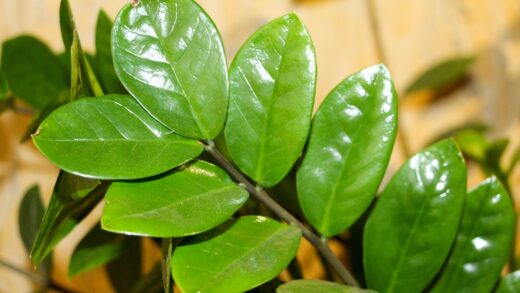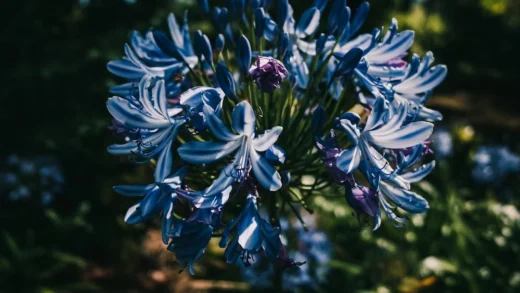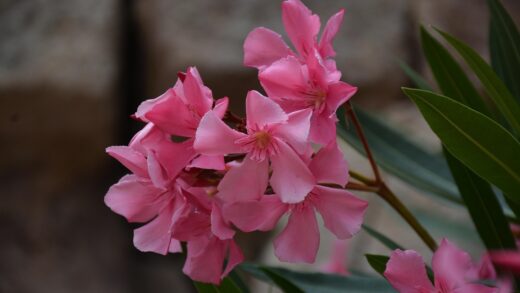Successfully establishing a Japanese ornamental cherry in the landscape begins long before the tree is placed in the ground, involving careful planning and preparation to ensure it has the best possible start. The process of planting is a critical event in the life of the tree, directly influencing its ability to develop a strong root system and adapt to its new environment. Similarly, understanding the methods of propagation opens up the possibility of creating new trees, preserving the specific characteristics of a beloved cultivar for future enjoyment. Both planting and propagation are rewarding skills that connect the gardener more deeply to the lifecycle of these magnificent trees.
The ideal time to plant a Japanese ornamental cherry is during its dormant season, which typically spans from late autumn after the leaves have dropped until early spring before new buds begin to break. Planting during this period minimizes stress on the tree, as it is not actively trying to support a full canopy of leaves and can instead focus its energy on root establishment. Container-grown trees offer more flexibility and can be planted throughout the year, but the cooler, moister conditions of autumn and spring still provide the most favorable window for successful transplanting and reduce the need for intensive watering.
Propagation, the process of creating new plants, can be achieved through several methods for ornamental cherries, with grafting and cuttings being the most common. Grafting is a highly skilled technique where a piece of a desired cultivar (the scion) is joined onto the root system of a hardier, compatible rootstock. This method is used by nurseries to ensure that the resulting tree is a true genetic clone of the parent, possessing the same flower color, size, and growth habit. Propagation from softwood cuttings, taken in late spring or early summer, is a method more accessible to home gardeners, though it requires specific conditions to be successful.
Whether you are planting a nursery-bought tree or a self-propagated specimen, the principles of proper site preparation remain paramount. The chosen location must provide the requisite full sun and well-drained soil that these trees demand for optimal health and flowering. Rushing the planting process or cutting corners on soil amendment can lead to a struggling tree that fails to thrive, underscoring the importance of patience and thoroughness. A well-planted tree is an investment that will pay dividends for decades to come.
Ultimately, the acts of planting and propagating are acts of future-making, setting the stage for years of seasonal beauty. The care taken in digging the right-sized hole, correctly positioning the tree, and providing initial aftercare directly translates into a vigorous, healthy specimen. By mastering these foundational techniques, a gardener does more than simply add a plant to the landscape; they actively participate in the continuation of a horticultural legacy, ensuring that the ephemeral beauty of the cherry blossom will return spring after spring.
More articles on this topic
Selecting the right specimen
The journey to a magnificent ornamental cherry begins with the selection of a healthy, well-structured tree from the nursery. When choosing your specimen, look for a tree with a strong central leader (the main upward-growing trunk) and well-spaced, scaffold branches that radiate outwards. Avoid trees with co-dominant leaders (two competing main trunks) or branches that are clustered too closely together, as these can lead to structural weaknesses and potential breakage later in life. The branching structure should be balanced and symmetrical, giving an indication of the tree’s future shape.
Inspect the trunk and branches carefully for any signs of damage, disease, or pests. Look for wounds, cankers (sunken, dead areas of bark), or insect holes, as these can be entry points for pathogens and compromise the long-term health of the tree. The bark should be smooth and intact for a young tree, without any cracks or peeling areas that might indicate stress or disease. Also, check the undersides of leaves and branch crotches for any signs of insects like aphids or scale.
The health of the root system is just as crucial as the visible parts of the tree. If you are purchasing a container-grown tree, gently slide the tree out of its pot to examine the roots. The roots should be firm, whitish or light-colored, and distributed throughout the soil mix. Be wary of trees that are severely root-bound, where the roots are densely circling the inside of the pot; this can inhibit the roots from growing out into the native soil after planting. A few visible roots are normal, but a solid mass of circling roots indicates the tree has been in the container for too long.
Consider the specific cultivar and its mature characteristics to ensure it is a good fit for your available space and aesthetic preferences. Japanese ornamental cherries come in a wide variety of forms, from weeping and spreading to upright and columnar. They also vary in their mature height and spread, flower color (from pure white to deep pink), and bloom time. Researching different cultivars like ‘Kanzan’, ‘Yoshino’, or ‘Amanogawa’ will help you select a tree that not only appeals to you but is also well-suited to the scale of your garden and your local climate.
More articles on this topic
The planting process step-by-step
Once you have brought your selected tree home, the first step in the planting process is to dig the hole. The hole should be dug two to three times wider than the diameter of the root ball, but no deeper than the root ball itself. Digging a wide, shallow hole encourages the roots to grow horizontally out into the surrounding soil, which is where they will find the most oxygen and nutrients. It is a common and critical mistake to dig the hole too deep, which can cause the tree to settle over time, leading to the root flare being buried and potentially causing root rot.
Carefully remove the tree from its container or burlap wrapping. If it is in a plastic pot, lay it on its side and gently tap the edges to loosen the root ball before sliding it out. If the roots are moderately circling, use your fingers or a small hand tool to gently tease them apart and encourage them to grow outwards. For balled-and-burlapped trees, place the entire root ball in the hole first, then cut away and remove the twine and as much of the burlap and wire basket as possible without causing the root ball to disintegrate.
Position the tree in the center of the hole, ensuring that the top of the root ball is level with or slightly higher than the surrounding ground level. The point where the trunk begins to flare out into the main roots, known as the root flare, must be visible at the soil line after planting. Use a straight edge like a shovel handle placed across the hole to check the height. Backfill the hole with the native soil that was originally removed; amending the backfill soil with large amounts of compost can create a “pot” effect, discouraging roots from growing beyond the improved soil.
After backfilling the hole about halfway, water it thoroughly to help settle the soil and eliminate any large air pockets around the roots. Once the water has drained, finish backfilling with the remaining soil, gently tamping it down to firm it up. Create a shallow watering berm or saucer of soil around the outer edge of the planting hole to help direct water to the root ball. Water the newly planted tree again, deeply and slowly, to ensure the entire root zone is saturated.
Propagation through cuttings
Propagation from softwood cuttings is a popular method for creating new ornamental cherry trees, allowing a gardener to clone a favorite specimen. The best time to take these cuttings is in late spring or early summer when the new growth is still flexible but has begun to mature slightly. Look for healthy, vigorous shoots from the current season’s growth. The ideal cutting should be about four to six inches long, taken from the tip of a branch, and should be cut just below a leaf node (the point where a leaf attaches to the stem).
Once you have taken your cuttings, they must be prepared promptly to prevent them from drying out. Using a sharp, sterile knife or pruners, remove the leaves from the lower half of the cutting. If the remaining leaves are very large, they can be cut in half horizontally to reduce moisture loss through transpiration. The base of the cutting is then wounded slightly by making a shallow vertical slice on two sides, which can encourage better root formation.
To increase the chances of successful rooting, dip the bottom inch of the prepared cutting into a rooting hormone powder or gel. This product contains auxins, which are plant hormones that stimulate root development. After dipping, gently tap the cutting to remove any excess hormone. The cutting is then ready to be inserted into a prepared rooting medium, which should be a sterile, well-draining mix such as a combination of perlite, vermiculite, and peat moss.
Create a high-humidity environment for the cuttings, which is essential for preventing them from wilting before they can form roots. This can be achieved by placing the pot of cuttings inside a clear plastic bag or under a propagation dome. Place the setup in a location with bright, indirect light, as direct sunlight can be too intense and scorch the cuttings. Keep the rooting medium consistently moist but not waterlogged, and within several weeks to a few months, the cuttings should begin to develop their own root systems.
Propagation through grafting
Grafting is the primary method used by commercial growers to propagate specific cultivars of Japanese ornamental cherry, ensuring consistency and desirable traits. This technique involves joining two genetically distinct plants: the scion, which is a cutting from the desired cherry variety, and the rootstock, which is the root system of a compatible and often hardier cherry species. The goal is to align the cambium layers (the thin layer of living tissue just under the bark) of both the scion and the rootstock so they can fuse and grow together as a single plant.
The selection of both the scion and the rootstock is critical for a successful graft. The scion wood is typically collected during the dormant season and kept cool and moist until it is time to graft in the spring. It must be taken from healthy, disease-free wood from the previous year’s growth. The rootstock is usually a young seedling or rooted cutting of a species like Prunus avium (wild cherry), chosen for its vigor, adaptability to different soil types, and disease resistance.
Several different grafting techniques can be used, with the whip-and-tongue graft and the cleft graft being common choices for ornamental cherries. The whip-and-tongue method is used when the scion and rootstock are of a similar diameter and involves making complementary interlocking cuts on both pieces to maximize the surface area of cambium contact. The cleft graft is used when the rootstock is significantly thicker than the scion, where the rootstock is split and one or two scions are inserted into the wedge.
After the scion and rootstock have been joined, the graft union must be securely wrapped and sealed to protect it from drying out and to hold the two pieces together firmly. Grafting tape or rubber bands are used to wrap the union, and the entire area, including the cut tip of the scion, is then coated with a waterproof grafting wax or sealant. The grafted plant is then kept in a controlled environment to allow the union to heal, a process known as callusing, before it can be planted out in the nursery field.
Aftercare for new plantings
The care provided in the first few growing seasons after planting is crucial for the successful establishment of a Japanese ornamental cherry. Consistent and deep watering is the most important task during this period. The soil around the root ball should be kept consistently moist to encourage new root growth, which is essential for the tree’s anchorage and its ability to absorb water and nutrients. Check the soil moisture every few days, especially during hot or windy weather, and water thoroughly whenever the top few inches feel dry to the touch.
Applying a layer of organic mulch around the base of the newly planted tree is highly beneficial. A two- to four-inch layer of wood chips, shredded bark, or compost spread over the root zone helps to conserve soil moisture, regulate soil temperature, and suppress competing weeds. It is critical, however, to keep the mulch from direct contact with the tree’s trunk. Pull the mulch back a few inches from the trunk to create a small, mulch-free circle, as piling mulch against the bark can trap moisture and lead to decay and disease.
In the first year, it is best to hold off on fertilizing a newly planted tree. The tree’s primary focus should be on establishing its root system, and adding fertilizer can sometimes encourage top growth at the expense of root development. The focus should be on providing optimal water. After the first year, a light application of a balanced, slow-release fertilizer in the early spring can be beneficial if the soil is poor or the tree’s growth appears sluggish.
Pruning should also be kept to a minimum for the first couple of years. The only cuts that should be made are to remove any branches that were broken or damaged during the planting process. The tree needs its full complement of leaves to produce the energy required for root growth and establishment. Formative or structural pruning can begin in the second or third year, once the tree has had ample time to acclimate to its new location and has started to put on vigorous new growth.




















